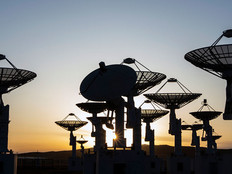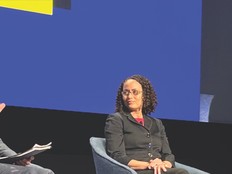What's on the GSA's Busy 2018 IT Agenda?
When it comes to IT modernization, 2017 was just the appetizer.
Now that the Modernizing Government Technology Act is law, the $50 billion Enterprise Infrastructure Solutions contract has been awarded, and the White House has listed its priorities for federal technology upgrades, it's largely up to the General Services Administration to help agencies keep the ball rolling.
The GSA is going to have a busy 2018, based on the items that are on its IT agenda, including turning IT modernization projects into reality and helping agencies transition to EIS. And while agency IT leaders will need to push forward on IT agendas that are specific to their agency's needs, the GSA will undoubtedly play a strong supporting role.
Here is a look at some of the major items on the GSA's 2018 IT agenda:
SIGN UP: Get more news from the FedTech newsletter in your inbox every two weeks!
GSA Seeks to Spur Technology Modernization at Agencies
In December, Emily Murphy took over as the GSA's administrator. A longtime government procurement expert, Murphy has vowed to focus on ethical leadership, reducing duplication across government contracts and streamlining GSA's operations.
Murphy has an "evolutionary, not revolutionary" leadership style, Alan Chvotkin, executive vice president and counsel at the Professional Services Council, tells FCW. "That's a good thing," he adds.
Under Murphy, GSA will likely tackle several major undertakings, including the shift to category management and shared services, as well as its new Centers of Excellence initiative.
The White House announced the CoEs model in mid-December, and the Agriculture Department will be the first agency to pilot the model. The GSA's Technology Transformation Service (TTS) will create the CoE teams around five areas: cloud adoption, IT infrastructure optimization, customer experience, service delivery analytics and contact centers. The CoEs "will manage centralized, function-specific talent, solutions and acquisition vehicles," says Joanne Collins Smee, who heads the TTS, Nextgov reports.
Bill Zielinski, deputy assistant commissioner of the GSA's Office of the Information Technology Category, tells FedScoop that in 2018, IT modernization agendas will be reflected more specifically and formally in agencies' planning processes.
Agencies, Zielinski says, "will be individually looking at where their priorities lay from a mission delivery standpoint and will be making decisions about where and how to focus their modernization efforts."
There will also be "a governmentwide lens" through which agencies' modernization efforts will be viewed, he says.
That will be used to see "how we collectively, as a community, develop tools for our toolkit to address priorities, including or specifically regarding governmentwide contracts and/or solutions to address critical issues," Zielinski tells FedScoop. That will include cybersecurity, cloud adoption and shared services.
The GSA will also manage a centralized Technology Modernization Fund that Congress needs to appropriate money for under the MGT Act. The law authorizes $250 million for the fund for fiscal year 2018 and the same amount for fiscal year 2019. Agencies can apply to get money from the fund to modernize their IT and make it more efficient and secure.
"We look forward to utilizing that fund subject to future appropriations," Zielinski says.
As agencies modernize their IT, they must be mindful of cybersecurity threats as well as directives to adopt cloud services, according to Zielinski. GSA will help agencies "bake cybersecurity into their acquisitions" and "support agencies with our cloud expertise."
GSA Aims to Help Agencies Transition Networks to EIS
Another major task for the GSA this year will be managing the transition to the EIS contract. The contracting vehicle will enable agencies to modernize their network infrastructures and embrace new architectures, including software-defined networking.
The EIS contract will also require agencies to transition away from the Networx contracting vehicle by the spring of 2020. The GSA has been working diligently with agencies on their transition plans, and it's been keen to avoid the years-long delay that muddied the transition to Networx after that contract was awarded a decade ago.
Technology will continually be updated and refreshed under the vehicle, and the contract also builds in time at the end for a transition to a new vehicle.
"EIS represents a new generation of contracts that are constructed in a way that is mindful of emerging technology and the new way in which agencies are building technical capabilities," Zielinski says to FedScoop. "EIS has been designed to change and evolve as tech changes."
The new contract will allow agencies to "procure solutions in a way they could not before," Zielinski tells FedScoop, adding, "There is a real opportunity to utilize EIS for enterprise-level IT capabilities."








